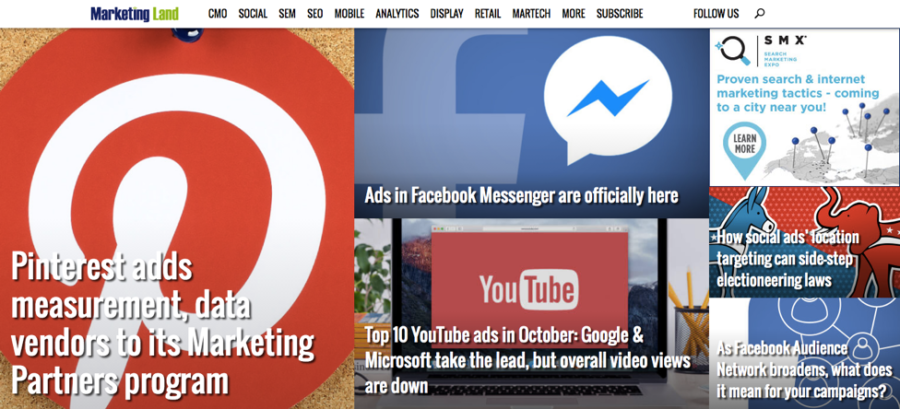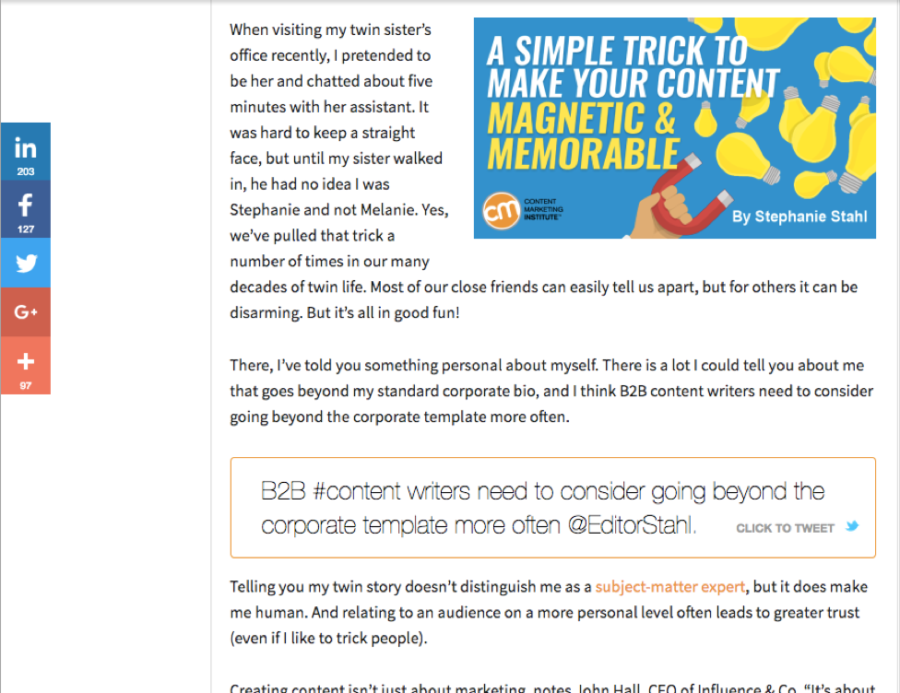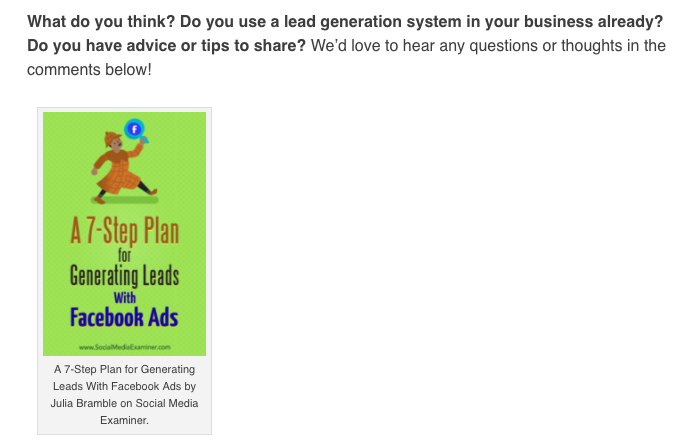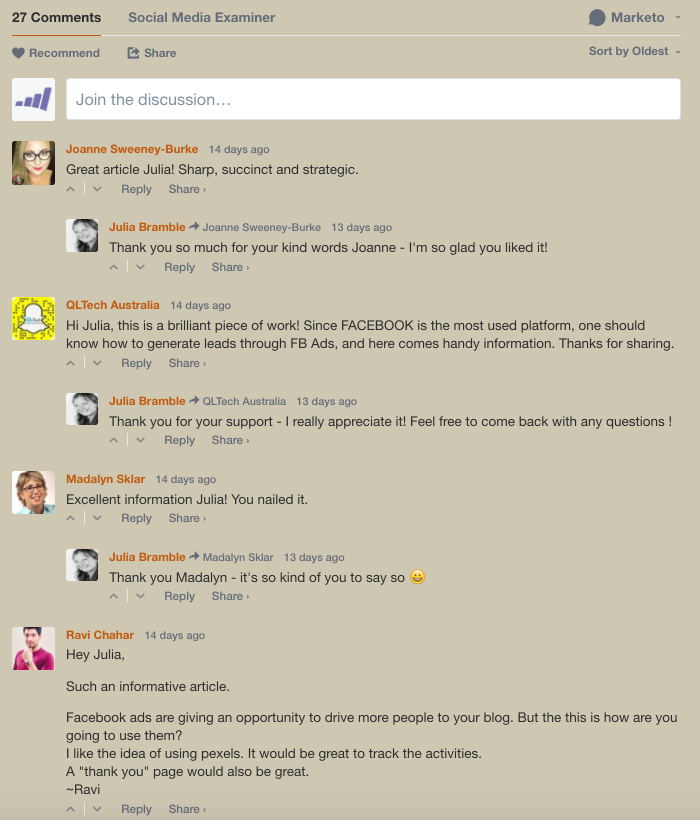
In the world of content marketing, it’s inescapable: Success comes down to engagement.
You can have thoughtful branding, great products, and a hard-working team, but if you’re not engaging your buyers through each step of the customer lifecycle, you’ll never reach your full potential. Simply put, without engagement, a key component of your marketing strategy will be missing: your audience.
How do successful content marketers engage in today’s information age? They never lose sight of the fact that their prospects and customers are their biggest assets. For more specific answers, let’s take a look at some of the top digital marketing blogs and highlight five lessons that will make your content more engaging:
1. Set Engagement Objectives
First, as in most marketing tasks, you need to define success. You’ll never really know (or will be able to prove to management) that you’ve created “engaging” content unless you define what “engaging” looks like. The Content Strategist suggests an inverted approach to identifying engagement objectives:
Ultimately, it helps to work backwards from business goals to determine content objectives, before listing KPIs [Key Performance Indicators], to measure whether those objectives are being met.
So, for example, if you have a business goal of improving the customer experience, a key KPI might be the rate of customer service issues that are handled—via different channels like social media, email, and your website. Once you have outlined your engagement goals and objectives, as well as the metrics to monitor them, you can map those goals with your content marketing strategy.
Aligning content topics and general content goals with your engagement objectives will help keep your content focused and reveal any gaps where there is no content to support an objective.
2. Target Personas, Not Demographics
Where a lot of digital marketing blogs focus on a specific niche, MarketingLand covers the gamut without sacrificing its position on most “Best Digital Marketing Blogs” lists.
There are several reasons (hello, big, bright visuals), not the least of which is a clear targeting of various personas. Their audience is digital marketers, but each post clearly speaks to a specific persona: social media marketers, search engine marketers, etc. That focus encourages engagement by allowing the content to speak to its audience with specialized language and a baseline understanding. To the reader, that translates as authority, and it’s much more engaging. The focus on marketing personas also helps organize the site’s menu structure. Because MarketingLand covers a variety of niches, their main navigation distinguishes those areas.
Outline a content strategy for your editorial calendar that focuses on your various personas. Then, keep the language and theme focused based on the personas(s) you’re developing content for.
3. Hone Your Social Sharing Tactics
Think beyond your own social media channels when it comes to social sharing, which means focusing on ways to encourage readers to share with their own audiences.
- Format images for social media. One of the most powerful ways to get your content shared and re-shared across social media is to attach a high-impact image specially formatted for social sharing. Tools like Canva make it easy to create images formatted for social media with text, images, and graphics.
- Make sharing links available. Of course, visual appeal has little value if no one sees it. Encourage readers to share your content on social media by making it as simple as possible. Make sure social media buttons are clear and at hand.
- Draft a tweet. Another way to encourage readers to share content while they’re engaged is to integrate a “Click to Tweet” function, which allows you to place a shareable quote in the body of a blog post.
This blog post from Content Marketing Institute scores a 3 out of 3:
- The featured image fits most social media channels, and includes the brand’s logo as well as the blog’s title and author—so it stands alone wherever it is shared.
- The social network buttons on the left scroll down with the reader, so they’re always available.
- Snippets are formatted for Twitter and can be tweeted out with one click.
4. Be a Storyteller
Few things are more engaging to an audience than a good story. You’re most likely creating content on topics that lots of other brands cover—what better way to grab and hold their attention to see the depth of your expertise and foster brand recognition?
There are different ways to be a storyteller, but the most important thing is to establish a connection with your audience. Most successful content marketers share enough about themselves or their brand so that their audience can relate. They use their own experiences to illustrate a point through storytelling.
On Copyblogger, Sean D’Souza talks about product pricing by relating it to an experience early in his career:
Many years ago, when I consulted with a company that sold beds in a store, we’d take customers around the store. We’d show them beds that cost $1,500, $2,000, and $4,000. And then we’d ask them if they were curious about the bed that cost $4,000.
You bet they were. You would be, and so would I—we’d all be curious about the features and benefits that caused an increase of 100% (or more) in the price.
It’s not an action-packed story. It doesn’t have to be, because as readers imagine themselves shopping for products with significant price differences, they’re relating. Relating doesn’t just help people to engage with content individually, it helps them feel a connection with your brand. It makes them want to come back and see what you have to say about tomorrow’s topic—and share it with their network.
5. Ask Them to Engage
The more engaging your content is, the more people will have something to say about it, which leads to the coveted comment either on your blog or on social media. However, people are more likely to respond if they’re asked to do so. Give readers a nudge with a question at the end of your blogs that directly asks for their opinions. For other content assets like whitepapers and ebooks, you can pose the same type of question on social media when you promote the asset.
Popular blog, The Social Media Examiner, poses a question at the end of each of their blogs to encourage reader engagement on the topic. Take a look at the engagement the blogs receive:
Create Engaging Content Like the Pros
There’s no doubt that digital marketing blogs are valuable resources on many different levels: The content is useful, and the blog itself is a testament to the effectiveness of the strategies they talk about.
When you visit your favorite blog, don’t just pay attention to the content itself; look at the visuals they incorporate, the placement of the share buttons, the (usually) conversational, storyteller style. Most of all, pay attention to how and why people engage with them and apply these lessons to your own content marketing strategy.
What’s your favorite digital marketing blog? Share in the comments below along with the lessons you’ve learned from it!
Read more:



